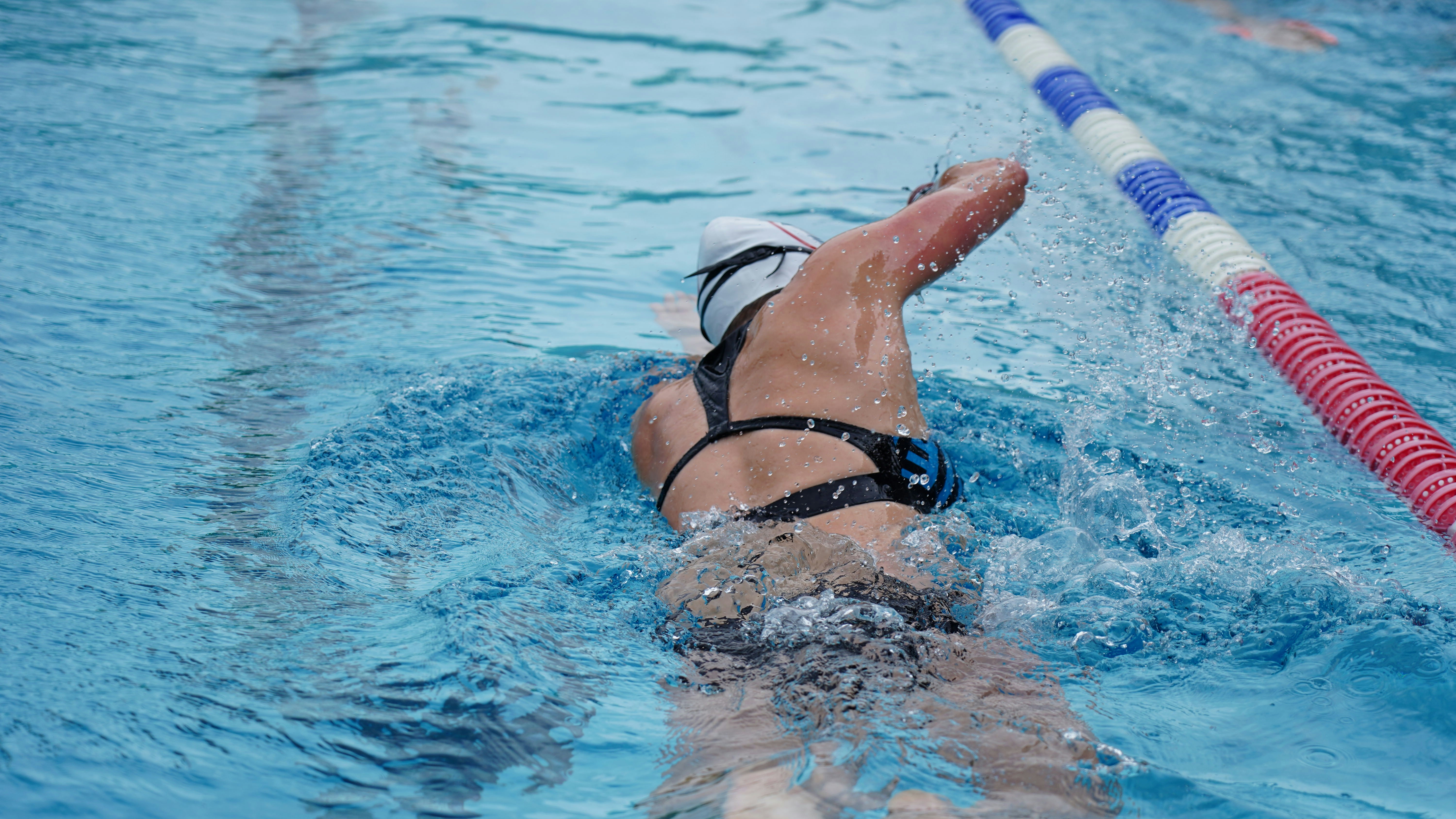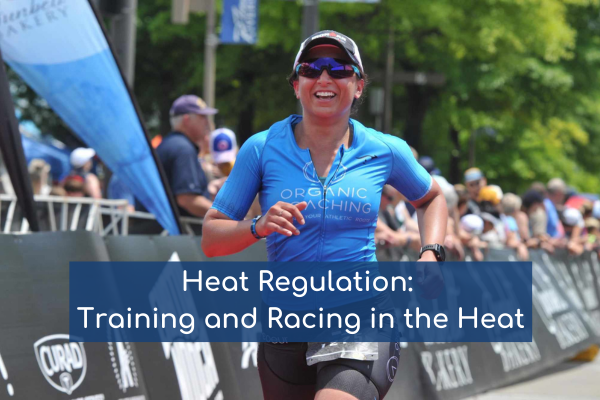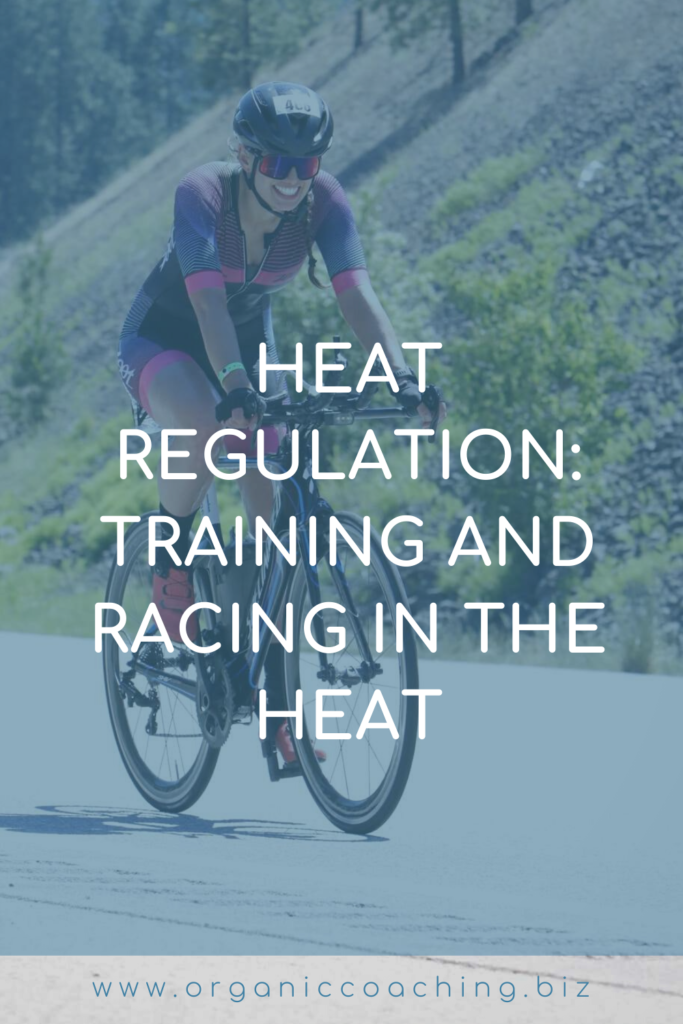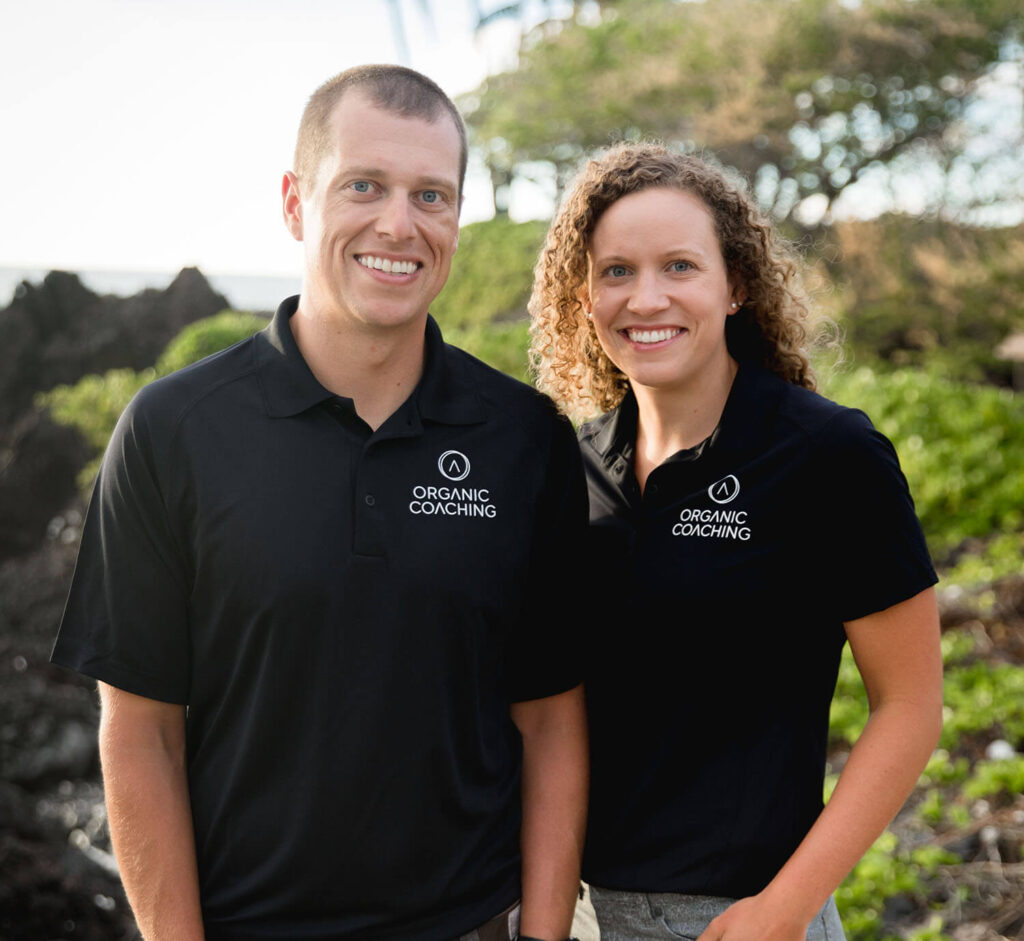

Training and racing in the heat and humidity is just plain hard! Many physiological factors make it even more challenging: core temperature regulation, hydration, higher perceived effort, and increased heart rate. As the temperature rises you need to change your approach. You simply can’t train and race the same in hot conditions as you would in ideal weather conditions. This doesn’t mean you are doomed to have a bad day. You can still put forth your best effort for the day!
You have an increase in your overall body temperature. Just like when you run a fever, the higher your core body temperature, the worse you are going to feel. As soon as the body starts to heat up, blood is diverted to the skin, where cooling takes place through sweating and evaporation. However, less blood is then available in the body to transport oxygen to the working muscles.
In return, less oxygen means you can’t run or bike as fast or as hard as you could and the effort to maintain or increase your pace drastically increases. In this way, training and racing in the heat are somewhat similar to training or racing at high altitudes. You become more easily dehydrated in hot and humid conditions. When fluid levels drop, your body’s cooling methods, mainly the ability to sweat decrease and you have a harder time controlling your body temperature. This in turn causes the core body temperature to rise faster, which creates a vicious cycle that severely limits performance.
Pre-cooling is meant to decrease body temperature before training or most commonly racing and has been shown to improve performance. This can be done in a variety of different ways such as soaking in cool water, wearing a cooling vest, wearing iced clothing/towels/hats/buffs, using fans to increase airflow, and drinking cold fluids. Some of these strategies are not practical at a race venue. But others can be combined and when utilized together, can further improve race performance. It’s also important to note that pre-cooling is not appropriate for every kind of race. Short events such as sprint triathlon and 10k are impaired with pre-cooling since your muscles need to be warm for optimal performance. Pre-cooling does not always improve your body’s temperature regulation. But can still improve performance due to psychological changes (lower perceived exertion).
The hotter it is, the more fluids your body needs. The body needs fluids to regulate temperature. If you sweat too much, your blood volume thins (more specifically the plasma), and your performance decline. In addition to carrying oxygen to the working muscles, the body also uses blood to transfer heat to the extremities where it’s dispersed to the environment more easily.
In hot environments, it’s difficult to maintain plasma volume in part due to the increased sweat rate that results from heat acclimatization. Therefore, another strategy is to increase plasma volume. This “hyperhydration” strategy involves drinking water with a high sodium content which has been shown to help with thermoregulation while also improving performance. Like pre-cooling, hyperhydration has some potential limitations. Hyperhydration can increase blood pressure to unsafe levels and can lead to digestive issues. If utilizing hyperhydration, keep in mind that additional time is needed for the fluid to empty from your stomach. Making this strategy less feasible for early morning race events.
In hot environments, the brain will change your pacing strategy so that a critical body temperature (~104°F) is not exceeded. While dependent on the training day or race, pacing strategies should be modified accordingly to the heat. Because the effects of heat accumulate as you work out, you want to start slower than normal and save attacks until the final stages of the race. Sticking to a slower pacing strategy can be difficult following some of the pre-cooling strategies described earlier as they can trick your mind into thinking the environment is cooler than it is. Optimal performance requires confidence in your pacing strategy so that the critical body temperature is not reached early in the race.
When training or racing on the road you encounter both heat from the sun and radiation from the asphalt. You will feel hot no matter what, so dress to minimize any more heat absorption. Wear lighter colors rather than black or dark colors, opt for moisture-wicking fabrics, and wear a hat to protect your head and shield your face. Visors are fine, but a full hat can offer further sun protection. Don’t forget to use plenty of sunscreen.
And there you have it! Hopefully, some of these tips and tricks can help you better regulate the heat this summer for your training and racing so you can keep the momentum going!
-Coach Carly
READ MORE: AVOID THESE TOP 5 SUMMER RUNNING MISTAKES


Carly and Tyler Guggemos built Organic Coaching in 2014 with a simple philosophy that works. The idea is to take what you have and grow it to get faster, fitter and stronger. And to do it with the time you have – not the time you wish you had.

For athletes who are ready to take their training to the next level while still thriving and succeeding in their professional and family life.
Copyright © 2024 Organic Coaching LLC